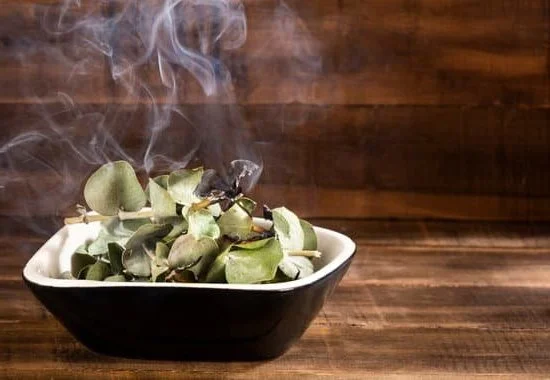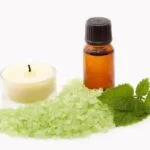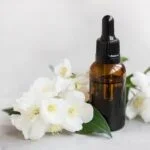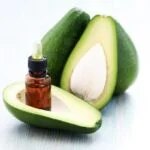Aromatherapy and essential oils are terms that are often used interchangeably, leading to confusion among many individuals. However, it is important to understand that there is indeed a difference between aromatherapy oil and essential oil. This article aims to provide clarity on this matter by exploring their origins, purposes, extraction methods, therapeutic benefits, safety considerations, practical uses, and how to assess their quality.
Aromatherapy oil refers to a concentrated oil that contains aromatic compounds derived from various plants. It is specifically formulated for use in aromatherapy practices for its scent and potential therapeutic properties. On the other hand, essential oil is a highly concentrated plant extract that captures the natural fragrance and beneficial properties of plants through various extraction methods.
To grasp the distinction between these two oils better, it is important to delve into their origins and purposes. Aromatherapy oil has been used for centuries as a means of enhancing physical, emotional, and spiritual well-being. Its use can be traced back to ancient civilizations such as Egypt, China, India, and Greece. Essential oils have a long history as well; however, they have primarily been used for medicinal purposes rather than aromatic enjoyment.
Understanding the differences between aromatherapy oil and essential oil lays the foundation for making informed decisions about which type of oil would best suit your needs. By exploring their extraction methods and processes, assessing quality factors such as purity and authenticity becomes possible. Furthermore, delving into their therapeutic benefits allows individuals to harness their healing properties effectively while considering any safety precautions.
Defining Aromatherapy Oil
Aromatherapy oils, also known as essential oils, have a rich history dating back thousands of years. The origins of aromatherapy can be traced back to ancient civilizations such as the Egyptians, Greeks, and Romans who used various plant extracts for their therapeutic properties. These aromatic oils were believed to possess healing powers and were used for both physical and psychological well-being.
In its essence, aromatherapy oil is a concentrated liquid that contains volatile compounds derived from plants. These compounds are typically extracted through processes such as steam distillation, solvent extraction, or cold pressing. The resulting oil captures the distinctive scent and therapeutic properties of the plant it is derived from.
The purpose of aromatherapy oil is to harness these natural components and utilize them for their potential health benefits. Each essential oil has its own unique chemical composition which determines its specific properties and effects on the body and mind. For example, lavender oil is often used for relaxation and stress relief, while tea tree oil is known for its antiseptic and antibacterial properties.
Aromatherapy oils can be used in a variety of ways, including inhalation, topical application, and even ingestion (with caution). Inhalation is one of the most common methods; it involves diffusing the oil into the air using a diffuser or inhaling it directly from an open container. When inhaled, these aromatic molecules stimulate the olfactory system which can have an impact on emotions and overall well-being.
Relevant Data:
| Aromatherapy Oil | Essential Oil |
|---|---|
| A concentrated liquid containing volatile compounds derived from plants. | A concentrated liquid containing volatile compounds derived from plants. |
| Used for their potential health benefits and therapeutic properties. | Used for their potential health benefits and therapeutic properties. |
| Origins can be traced back to ancient civilizations such as the Egyptians, Greeks, and Romans. | Origins can be traced back to ancient civilizations such as the Egyptians, Greeks, and Romans. |
Unveiling Essential Oils
What Are Essential Oils?
Essential oils are highly concentrated plant extracts that capture the essence, or “life force,” of a plant. They are typically obtained through a process known as steam distillation or cold-press extraction. Steam distillation involves heating the plant material and collecting the condensed vapor, which contains the essential oil. On the other hand, cold-press extraction is used for obtaining essential oils from citrus fruits by mechanically pressing their peels.
The History and Uses of Essential Oils
The use of essential oils dates back to ancient civilizations like Egypt, Greece, and China, where they were revered for their therapeutic properties and spiritual significance. Throughout history, essential oils have been utilized in various ways – from perfumes and cosmetics to medicinal remedies and cleaning agents.
In recent times, essential oils have experienced a resurgence in popularity due to their potential health benefits. They are commonly used in aromatherapy practices to promote relaxation, reduce stress, improve mood, and support overall well-being. Additionally, essential oils can be found in numerous skincare products, hair care formulations, household cleaners, and even as flavorings in food and beverages.
Understanding How Essential Oils Work
When applied topically or inhaled through aromatherapy practices, essential oils interact with the body on multiple levels. One of the primary mechanisms of action is through olfaction – the act of smelling. The molecules present in essential oils stimulate certain receptors in the nose which send signals to the brain’s limbic system. This area of the brain is closely associated with emotions, memory formation, and hormone regulation.
Essential oils can also enter the bloodstream through topical application or inhalation. Once absorbed into the bloodstream, they may exert pharmacological effects on different systems within the body such as respiratory function or hormonal balance. It’s important to note that while some essential oils have demonstrated therapeutic potential, they should not be considered as replacements for proper medical treatment and guidance.
In the next section, we will explore the key differences between aromatherapy oil and essential oil in terms of their extraction methods and processes.
Key Differences Between Aromatherapy Oil and Essential Oil
One of the key differences between aromatherapy oil and essential oil lies in the methods and processes used to extract these oils. These methods greatly impact the quality, purity, and therapeutic properties of the oils.
Aromatherapy oil is typically extracted through a process known as cold pressing or expression. This method involves mechanically pressing or squeezing the plant material, such as flowers, leaves, or fruit peels, to release the aromatic compounds. The resulting oil retains a strong scent and may contain small amounts of other plant components such as waxes or color pigments. Some common examples of aromatherapy oils obtained through cold pressing include citrus oils like lemon, orange, and grapefruit.
On the other hand, essential oils are often extracted using more complex methods such as steam distillation or solvent extraction. Steam distillation involves passing steam through plant material to separate the volatile aromatic compounds from the water vapor. The steam is then cooled and condensed to collect the essential oil.
Alternatively, solvent extraction uses a solvent like hexane to dissolve the aromatic compounds from plant material. After evaporation of the solvent, pure essential oil remains. These extraction methods tend to yield highly concentrated and potent essential oils that capture more of the plant’s natural chemical composition.
It is important for consumers to understand these differences in extraction methods as they can have implications for safety and quality when using aromatherapy oils or essential oils. The extraction method used can affect factors such as fragrance intensity, shelf life stability, and potential allergenicity.
It is also worth noting that some plants may yield both an aromatherapy oil and an essential oil through different extraction methods. Therefore, it is crucial to read product labels carefully and choose oils that meet individual needs and preferences.
- Aromatherapy oils are typically obtained through cold pressing or expression.
- Essential oils are often extracted using steam distillation or solvent extraction.
- Extraction methods can impact fragrance intensity, shelf life stability, and allergenicity.
Assessing Quality
Factors to Consider in Assessing Quality
When it comes to determining the purity and authenticity of aromatherapy oil and essential oil, there are several factors that should be taken into consideration. These factors can help consumers ensure that they are using high-quality products that will provide the desired therapeutic benefits.
One important factor to consider is the source of the oil. Aromatherapy oils and essential oils should ideally be sourced from plants that are grown organically, without the use of synthetic fertilizers or pesticides. This ensures that the oils are free from harmful chemicals and contaminants. Additionally, it is important to choose oils that are derived from plants native to their specific region, as these oils tend to have a higher concentration of beneficial compounds.
Another factor to consider is the extraction method used to obtain the oil. Different methods can yield different levels of quality and purity. The most common extraction methods include steam distillation, cold pressing, and solvent extraction. Steam distillation is considered one of the best methods for extracting essential oils, as it preserves their natural properties effectively. Cold pressing is commonly used for extracting citrus oils, while solvent extraction involves using chemical solvents to extract aromatic compounds.
Labeling and Testing Procedures
In addition to considering the source and extraction method, consumers should also pay attention to labeling information provided by manufacturers. It is important for companies to provide detailed labeling, indicating whether an oil is pure or diluted with carrier oils or other substances. Transparency in labeling can help consumers make informed choices about the products they purchase.
Furthermore, reputable suppliers often provide information about testing procedures that have been conducted on their oils. Third-party testing can confirm the quality and purity of aromatherapy oils and essential oils. Look for certifications such as GC/MS (Gas Chromatography/Mass Spectrometry) analysis, which identifies individual components present in an oil sample.
Avoiding Synthetic Fragrances and Adulterations
Another key consideration in assessing the quality of aromatherapy oils and essential oils is avoiding synthetic fragrances and adulterations. Some companies may use synthetic fragrances to mimic the scent of certain oils, which can compromise their therapeutic benefits. Additionally, it is important to be aware of the potential for adulteration, where cheaper oils or synthetic compounds are added to increase profits. Adulterated oils not only lack therapeutic properties but can also pose health risks.
To avoid synthetic fragrances and adulterations, consumers should purchase from reputable suppliers who provide up-to-date information about their sourcing and testing procedures. It is also beneficial to educate oneself about common adulterants and familiarize oneself with the aroma and characteristics of pure essential oils.
By carefully considering these factors and taking precautions against adulteration, consumers can ensure that they are using high-quality aromatherapy oils and essential oils that deliver the desired therapeutic benefits.
Understanding Therapeutic Benefits
Aromatherapy oil and essential oil both have therapeutic benefits, but they differ in terms of their healing properties. Understanding these differences can help individuals make informed choices based on their specific needs and preferences.
Aromatherapy oils are primarily used in aromatherapy, which is a holistic approach to wellness that utilizes the therapeutic properties of essential oils to promote physical and emotional well-being. Aromatherapy oils are often diluted with carrier oils before being applied topically or used in diffusers. They are known for their pleasant scents and are used to create a relaxing ambiance.
On the other hand, essential oils are highly concentrated plant extracts obtained through various extraction methods such as steam distillation or cold pressing. Due to their potency, they need to be properly diluted before use. Essential oils have a wide range of therapeutic properties, including anti-inflammatory, antimicrobial, analgesic, and sedative effects. These properties make them effective in treating various ailments such as headaches, muscle pain, digestive issues, stress, and sleep disorders.
When using aromatherapy oil or essential oil for therapeutic purposes, it is important to consider the specific healing properties of each oil. For example, lavender essential oil is well-known for its calming and soothing effects on the mind and body, making it beneficial for sleep issues and relaxation. Peppermint essential oil has invigorating properties that can help alleviate headaches and improve focus.
It is crucial to note that not all aromatherapy oils or essential oils are created equal. The quality and purity of these oils can significantly impact their therapeutic benefits. It is recommended to purchase from reputable sources that provide detailed information about the sourcing, extraction method, and purity of their products.
Overall, understanding the healing properties of both aromatherapy oil and essential oil allows individuals to tailor their choice according to their specific needs. Whether seeking relaxation or targeting specific health concerns, incorporating these natural remedies into daily routines can enhance overall well-being.
Safety Considerations
When using aromatherapy oil and essential oil, it is important to exercise caution and take necessary precautions to ensure safe usage. While these oils can provide numerous benefits, they should be used properly to avoid potential adverse effects. Here are some safety considerations to keep in mind when using aromatherapy oil and essential oil:
- Dilution: Both aromatherapy oil and essential oil are highly concentrated substances that should typically be diluted before use. Direct application of undiluted oils can cause skin irritation, sensitization, or even burns. It is recommended to dilute the oils with a carrier oil such as coconut, almond, or jojoba oil before applying them topically.
- Sensitivity and Allergies: Some individuals may have allergies or sensitivities to certain oils. It is crucial to perform a patch test before applying any new oil to the skin. Apply a small amount of diluted oil on the inner arm or behind the ear and wait for 24 hours to check for any adverse reactions.
- Photosensitivity: Certain citrus essential oils, such as bergamot or grapefruit, can increase sensitivity to sunlight and may cause skin discoloration or burns if exposed to the sun’s rays after application. It is best to avoid direct sunlight or UV exposure for at least 12 hours after applying photosensitive oils.
- Use During Pregnancy: Pregnant women should consult with their healthcare provider before using any aromatherapy or essential oils. Some oils may not be suitable during pregnancy due to their potential effects on hormonal balance.
- Storage: Proper storage of aromatherapy and essential oils is important for maintaining their quality and safety. They should be kept in dark-colored glass bottles away from direct sunlight or heat sources, as exposure can degrade the quality of the oils over time.
By following these safety considerations, individuals can enjoy the benefits of aromatherapy and essential oils while minimizing any potential risks. It is always advised to seek guidance from a qualified aromatherapist or healthcare professional for personalized advice based on individual health conditions and needs.
Practical Uses
Both aromatherapy oil and essential oil offer a wide range of practical uses and techniques for enhancing overall well-being. One of the most common applications is through diffusion, using devices such as aromatic diffusers or vaporizers. These devices disperse the aroma of the oils into the air, allowing for inhalation and absorption into the body. This method is often used to promote relaxation, improve mood, relieve stress, or even purify the air.
Another popular way to utilize both aromatherapy oil and essential oil is through topical application. When diluted with a carrier oil such as coconut or jojoba oil, they can be applied directly to the skin for various purposes. Essential oils are commonly used in massage therapy to soothe muscles, reduce inflammation, or alleviate pain. Aromatherapy oils can also be used in skincare routines to improve complexion or address specific skin concerns like acne or aging.
Furthermore, both aromatherapy oil and essential oil can be incorporated into bath rituals for a deeply relaxing experience. Adding a few drops of these oils to warm bathwater allows for direct contact with the skin while inhaling their therapeutic scents. This method is particularly useful for reducing anxiety, promoting sleep, relieving muscle tension, or simply indulging in self-care.
Additional techniques for utilizing both types of oils include inhalation through steam inhalation methods, incorporating them into homemade cleaning products or beauty DIYs, adding them to unscented lotions or creams for customized skincare routines, blending them into candles or soaps for sensory experiences, or even using them in natural bug repellants.
Final Thoughts
In conclusion, understanding the difference between aromatherapy oil and essential oil is crucial when it comes to making an informed choice based on personal needs and preferences. Both types of oils have their own unique characteristics and benefits. Aromatherapy oil is formulated specifically for use in aromatherapy practices and is often blended with carrier oils, while essential oils are highly concentrated plant extracts that can be used for various purposes.
When deciding between aromatherapy oil and essential oil, it is important to consider the intended use. Aromatherapy oils are typically used for their aromatic properties, such as relaxation or mood enhancement, while essential oils have a wide range of therapeutic benefits that can be used for skincare, pain relief, or even insect repellent.
Another key factor to consider is the quality and authenticity of the oil. It is important to purchase from reputable sources that provide information about the extraction method and any additives used. Additionally, conducting research on specific brands can help determine their reputation within the industry.
Lastly, personal needs and preferences play a significant role in choosing between aromatherapy oil and essential oil. Considering factors such as scent preference, desired effects, and any potential allergies or sensitivities will ensure a more tailored choice.
Frequently Asked Questions
What’s the difference between essential oil and aromatherapy oil?
The main difference between essential oil and aromatherapy oil lies in their composition and purpose. Essential oils are highly concentrated plant extracts obtained through a distillation or extraction process. They capture the volatile aromatic compounds of plants, which give them distinct scents and potential therapeutic properties.
Aromatherapy oils, on the other hand, can refer to a broader range of products that incorporate fragrances for the purpose of scenting spaces or creating an ambiance. While some aromatherapy oils may contain essential oils, they often also contain synthetic fragrances or dilutions.
Can I use aromatherapy oils on my skin?
It is generally recommended to exercise caution when applying aromatherapy oils directly on the skin, as some can cause adverse reactions or sensitivities. Essential oils are potent substances that should be properly diluted in carrier oils such as almond oil, coconut oil, or jojoba oil before applying to the skin.
The concentration and safety guidelines for each essential oil can vary, so it’s important to consult reputable sources or seek advice from a qualified aromatherapist before using any specific oil topically. Additionally, certain essential oils should be avoided during pregnancy or by individuals with sensitive skin.
Does aromatherapy have to be essential oils?
Aromatherapy can involve more than just essential oils. While essential oils are commonly used in aromatherapy due to their concentrated aromatic properties and potential therapeutic benefits, they are not the sole requirement for practicing this alternative healing approach.
Aromatherapy can also include other aromatic substances such as hydrosols (flower waters produced during distillation), absolutes (highly concentrated aromatic plant extracts), or infused oils (carrier oils infused with plant material). These different forms of aromatic substances offer various options for creating blends tailored to individual needs and preferences in aromatherapy practices.

Are you looking for a natural way to improve your health and wellbeing?
If so, aromatherapy may be the answer for you.





